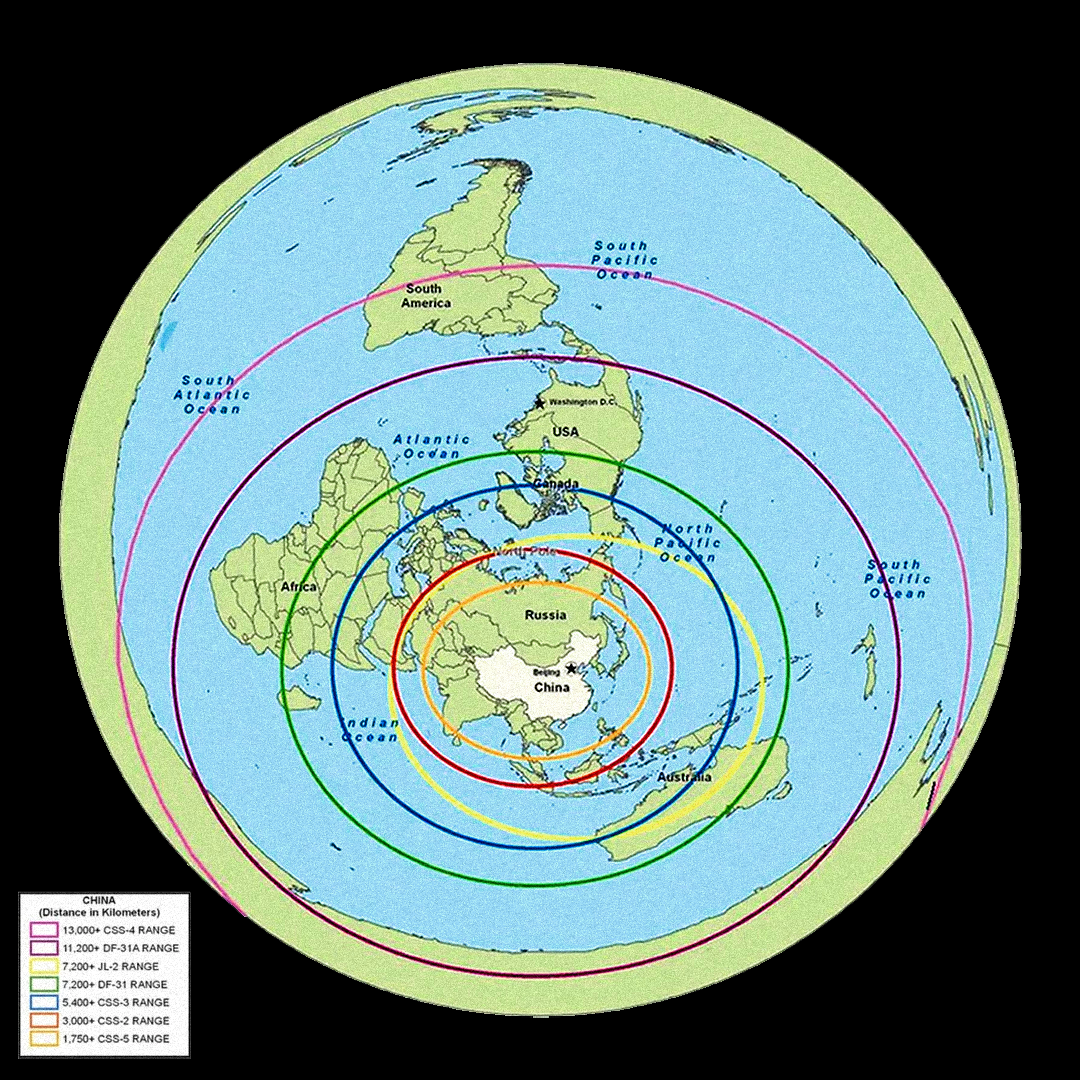China's Nuclear and Ballistic Arsenal Range Map


David Chen
Data Visualization Specialist
David Chen is an expert in transforming complex geographic datasets into compelling visual narratives. He combines his background in computer science ...
Geographic Analysis
What This Map Shows
The visualization titled "The Range of China’s Nuclear and Ballistic Arsenal" provides a detailed representation of the geographical reach and potential impact zones of China’s nuclear and ballistic missile capabilities. It illustrates the vast distances these weapons can cover, highlighting not only the territories they can target but also the strategic implications for regional and global security. This map serves as a crucial tool for understanding the scope of China's military power in relation to its neighbors and other global powers.
Deep Dive into China’s Nuclear and Ballistic Arsenal
China’s military capabilities have undergone significant transformations over the past few decades, particularly in the realm of nuclear and ballistic technology. The country is now recognized as one of the leading nuclear powers in the world. As of 2023, China is estimated to possess around 400 nuclear warheads, a number that continues to grow as the nation invests heavily in modernizing its arsenal.
What’s fascinating is how China’s development of intercontinental ballistic missiles (ICBMs) has changed the landscape of global military strategy. The most notable among these is the DF-41, which is believed to have a range exceeding 12,000 kilometers, capable of reaching targets across the United States. However, it's not just about reach; the sophistication of these missiles has also improved, with advancements in accuracy and payload capacity.
Interestingly, China also has a growing fleet of shorter-range missiles, including the DF-15 and DF-16, which can target regions throughout East Asia, including Japan and South Korea. This diversity in missile types allows China to exert influence and demonstrate military capability across different scenarios, whether in defense or deterrence.
Another critical aspect of China's arsenal is its ongoing development of hypersonic technology, which adds a new dimension to missile warfare. Hypersonic missiles can travel at speeds greater than five times the speed of sound, making them difficult to detect and intercept. This evolution presents a new challenge for military planners in the U.S. and allied countries, as traditional defense systems may not be equipped to handle these fast-moving threats.
The geographical distribution of China’s missile silos, launch facilities, and testing ranges, as depicted in the map, showcases the strategic intent behind their placement. The majority of these facilities are located in the northern and western regions of China, with some positioned closer to the coast, allowing for a rapid response to potential threats from the Pacific.
Regional Analysis
Breaking down the map, we can see the regional implications of China’s nuclear and ballistic capabilities. In Northeast Asia, the threat posed by China’s arsenal significantly impacts the security dynamics among neighboring countries. For instance, South Korea and Japan have responded to China's military growth by enhancing their own defense systems and deepening military alliances with the United States.
In contrast, countries in Southeast Asia are often caught in a delicate balancing act. Nations like Vietnam and the Philippines have to navigate their relationships with China carefully, given the proximity of Chinese missiles. The map indicates that even with medium-range missiles, China can threaten these nations, which leads to increased military spending and partnerships with external powers, particularly the U.S.
What’s also noteworthy is the impact on Taiwan. China's arsenal is explicitly designed to deter any moves towards Taiwanese independence, making it clear that its military capabilities extend well beyond mere deterrence. The range of missiles illustrated on the map demonstrates a near-total coverage of Taiwan, heightening regional tensions.
Significance and Impact
Understanding the range of China’s nuclear and ballistic arsenal is crucial for several reasons. First, it underscores the shifting balance of power in Asia and the implications for global security. As China continues to modernize its military, other nations may feel compelled to enhance their own capabilities, leading to an arms race in the region.
Moreover, this map highlights the importance of diplomatic efforts aimed at arms control and de-escalation. With increased military capabilities, the risk of miscalculations and conflicts rises, making it essential for nations to engage in dialogue and develop frameworks to manage these tensions.
Looking to the future, projections indicate that China’s nuclear arsenal will continue to grow, both in quantity and sophistication. As the geopolitical landscape evolves, understanding the implications of this growth on international relations, regional security, and global stability will be vital. The map serves not only as a depiction of military power but also as a reminder of the complexities involved in maintaining peace in a volatile world.
Visualization Details
- Published
- September 27, 2025
- Views
- 54
Comments
Loading comments...